This Saturday’s fixture between Barcelona and Valencia had originally been billed as the latest tactical battle between managers Ernesto Valverde and Marcelino García Toral following their duel in May’s Copa del Rey final in which Valencia emerged the victors.
Just three days before the game though we heard that Marcelino had been relieved of his duties in charge of the Valencian side. He has been replaced in the role by Albert Celades, who will only be able to take a few training sessions with the squad before deciding on his starting lineup and formation for Saturday’s game.
On the one hand, this is clearly a massive set-back in Valencia’s pre-match preparation, but on the other, it presents an opportunity for Valencia’s players to prove themselves to their new manager and allows Celades to catch Ernesto Valverde’s men off guard. As this will be the former Spain under-21s manager’s first game in charge, no one can be sure of how he will approach it tactically.
Nevertheless, in this tactical analysis preview we will attempt to paint a picture of how we can expect Barcelona to approach the game, as well as taking a look at how Celades might look to use the tools at his disposal to try to come away with a result against the champions.
What we’ve seen from Barcelona so far
It’s fair to say that the beginning of the 2019/20 season has not gone at all to plan for Barcelona. After a last-minute 1-0 defeat to Athletic in the opening weekend, a 5-2 victory over Betis saw Barça get back into their groove. In the last round of fixtures before the international break though they let their 2-1 lead slip away to Osasuna, coming away with a 2-2 draw.
The opening weeks of the season have presented Valverde with various headaches in terms of selection and tactics. The absence of Lionel Messi has meant that the team have had to work a little bit harder to unlock opposition defences and find openings.
The difficulty of finding a solution to Messi’s absence has been even further hampered by injuries to Luís Suárez and Ousmane Dembélé. This has seen the likes of Carles Pérez, Ansu Fati and Rafinha line up either side of Antoine Griezmann, who has been played in a central role.
Naturally, Real Betis and Osasuna fancied their chances of stopping Barcelona by protecting the middle of the pitch, forcing the Catalans to create from wider areas. This has meant that Barcelona have had to rely on the young wide players combining together well with the full-backs to create chances, as Griezmann has been starved of space in the middle of the park.
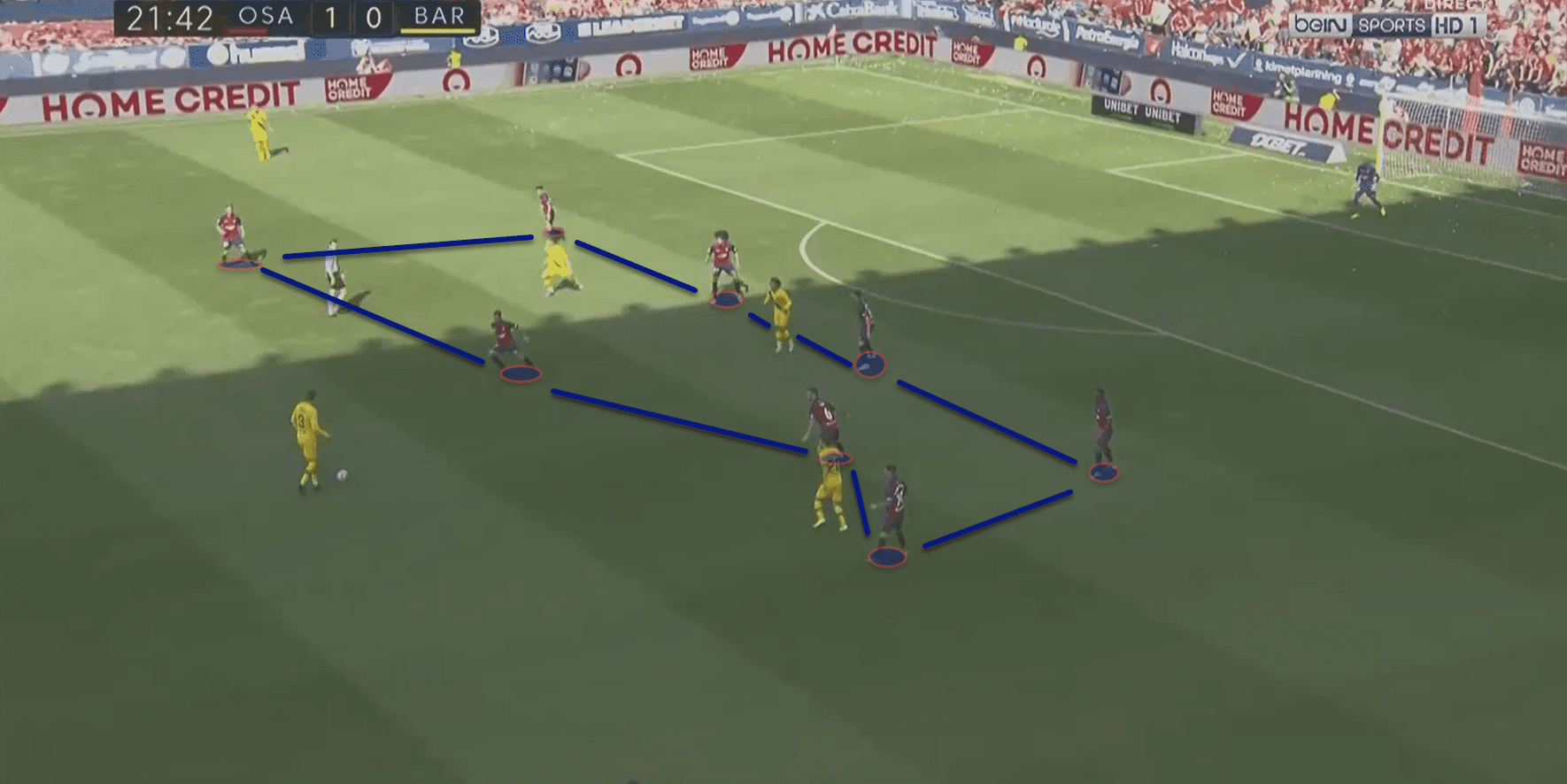
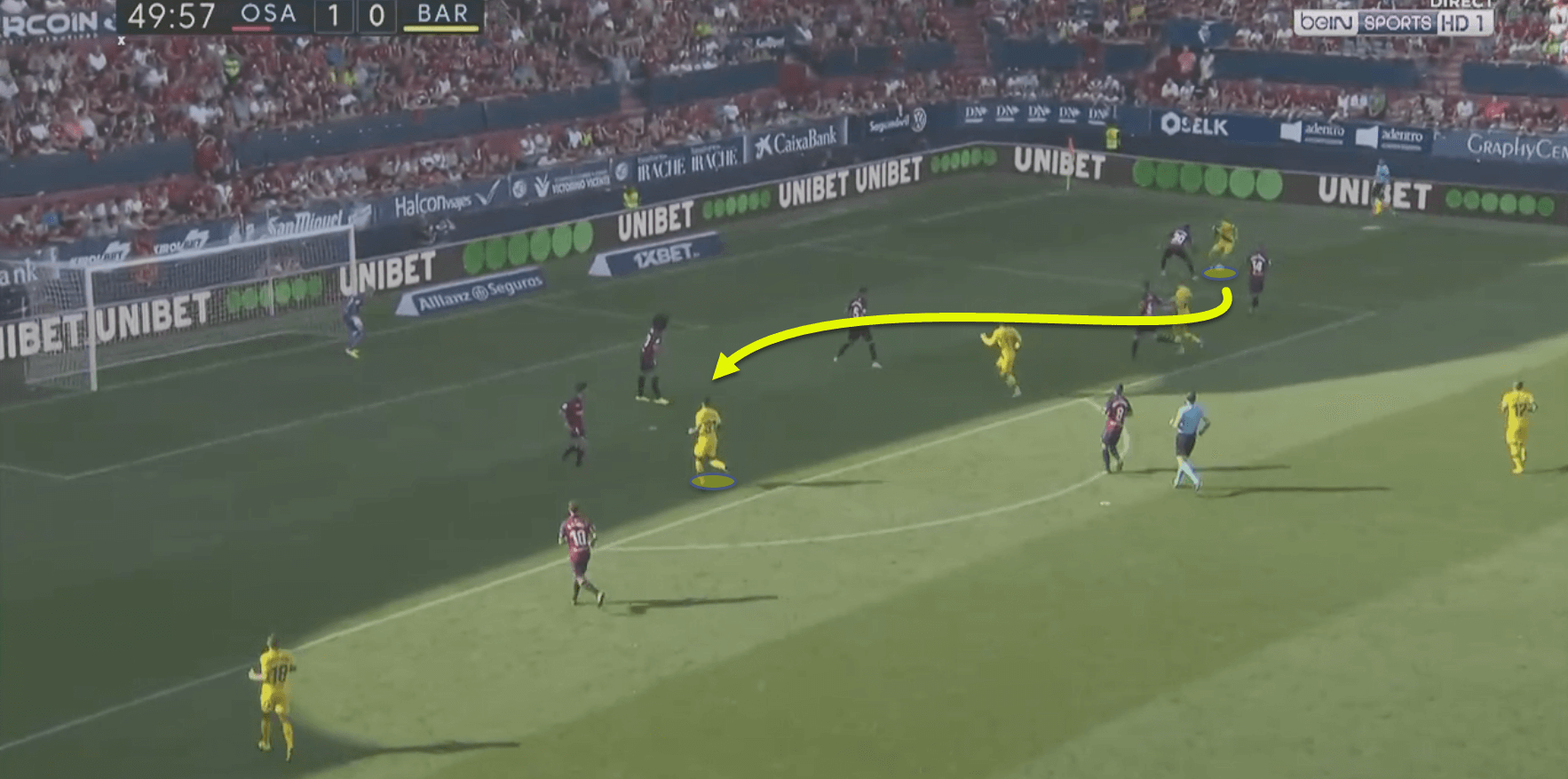
In this Saturday’s game against Valencia Suárez has been strongly tipped to return to the starting line-up, though Messi and Dembélé remain out. The Uruguayan should return to the central ‘number nine’ role, which should see Griezmann pushed out to the left, which is the set-up we saw against Athletic on the opening day.
In that fixture, Athletic were particularly aggressive in denying Barcelona space in the wide areas. In the first picture below we see how Athletic’s left-back steps out to close down Dembélé even before he receives the ball from Piqué.
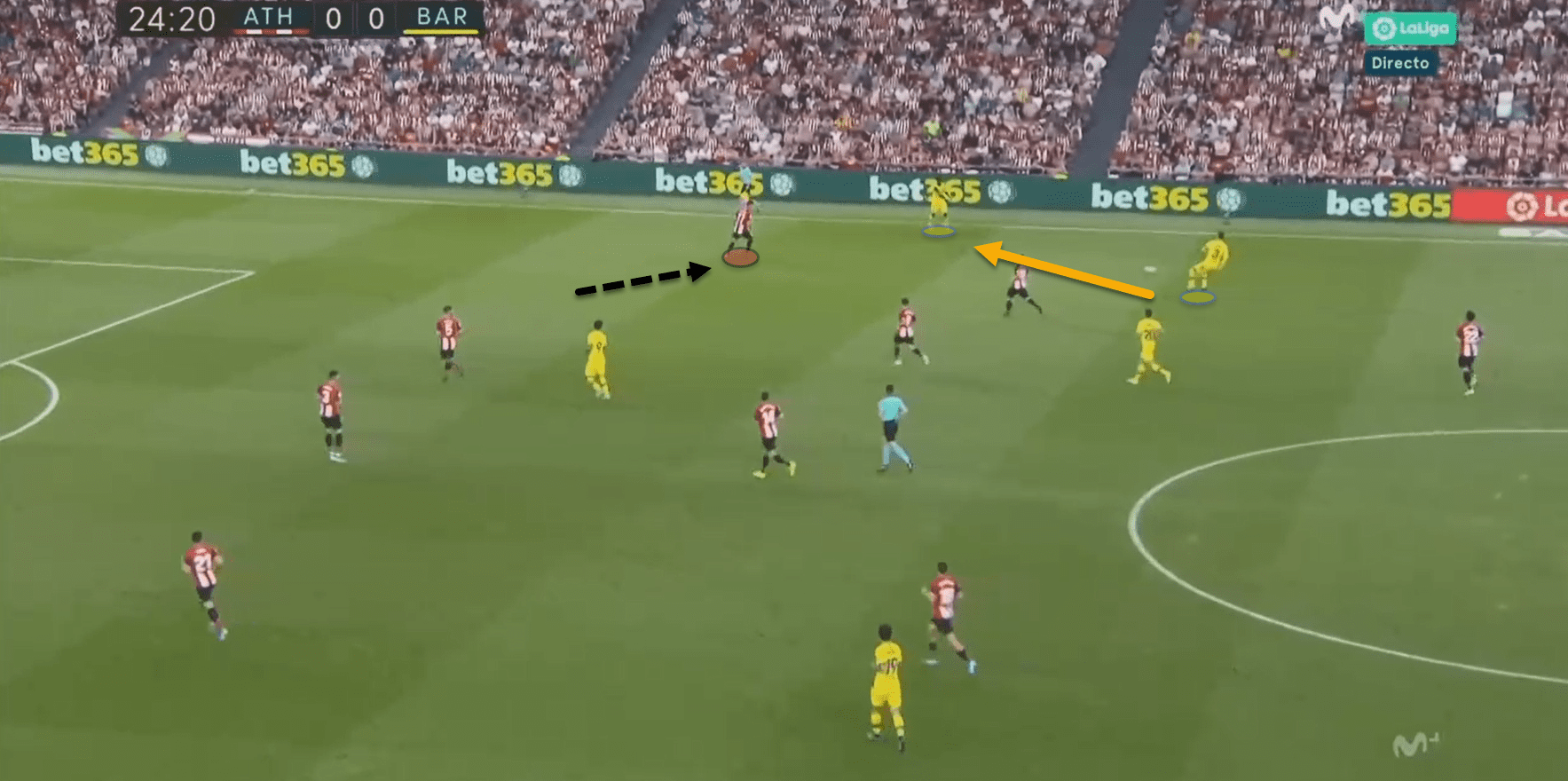
A few seconds later, after Frenkie De Jong switched the play over to the left, Athletic were equally aggressive to close down the right flank, as we can see in the picture below.
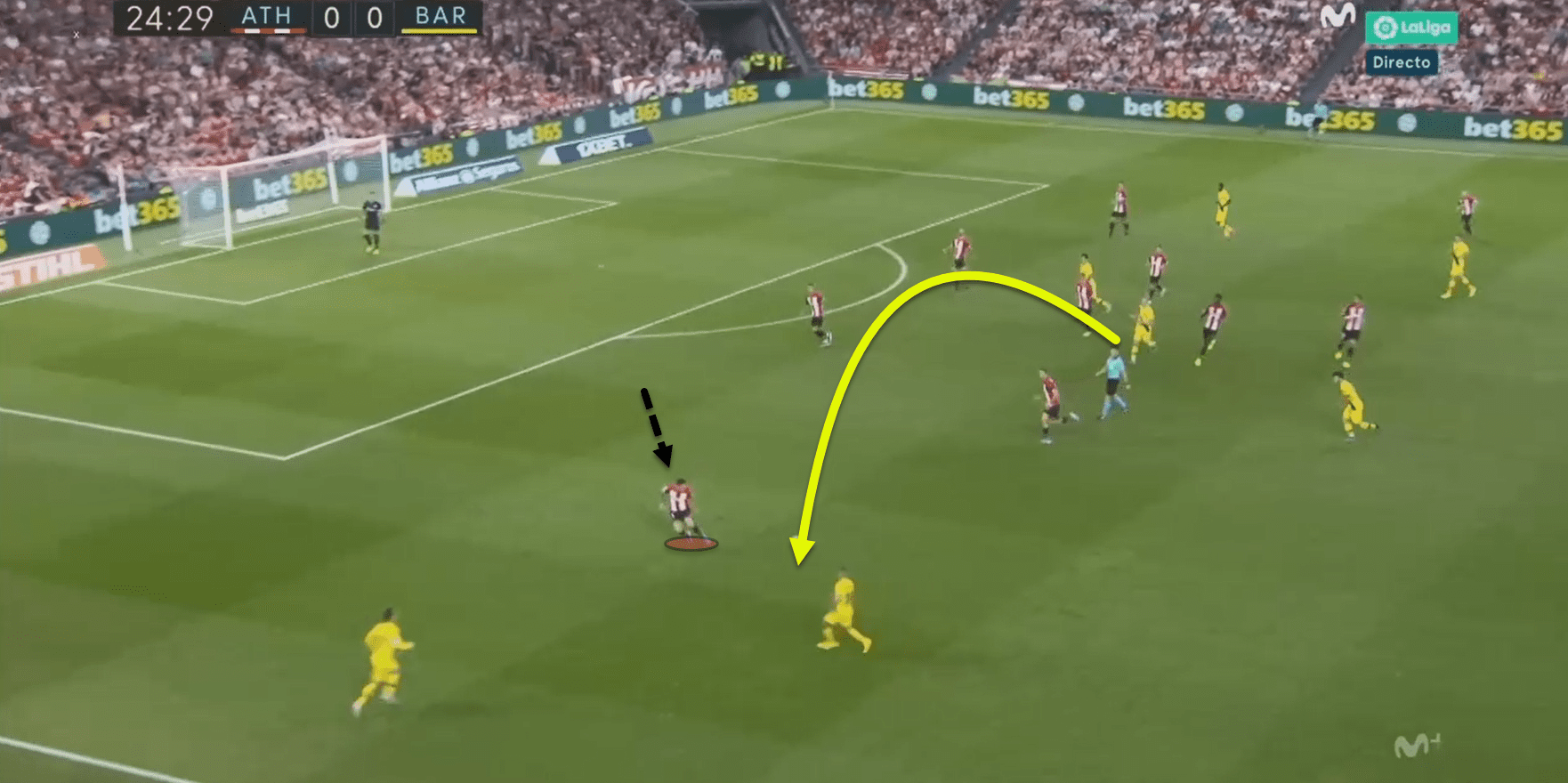
It would normally be a risky move for the full-back to step out and open up a large gap between himself and the centre backs, but in these two moves Barcelona were unable to exploit that gap.
As Griezmann settles into his role on the left he will have to build up a good understanding with Suárez and left-back Jordi Alba in order for the players to anticipate each other’s movements and not get in each other’s way.
What happened when the sides last met?
In 2018/19 the two sides met three times. After drawing 1-1 at the Mestalla and 2-2 at Camp Nou, it was Valencia who finally made it the best out of three by pulling off a surprise 2-1 victory in the Copa del Rey final.
It would seem therefore that Valencia, or at least Marcelino’s Valencia, had found a way of stopping the Champions. In the final, Valencia lined up in their usual 4-4-2. In this shape they are well drilled at forming two banks of four in order to stay compact.
They don’t mind falling back into a deep block because they know that, offensively, they are probably at their best on the counter-attack. Valencia’s wide players, especially Gonçalo Guedes, can cause real problems with their pace, and this is something Barcelona will be all too aware of.
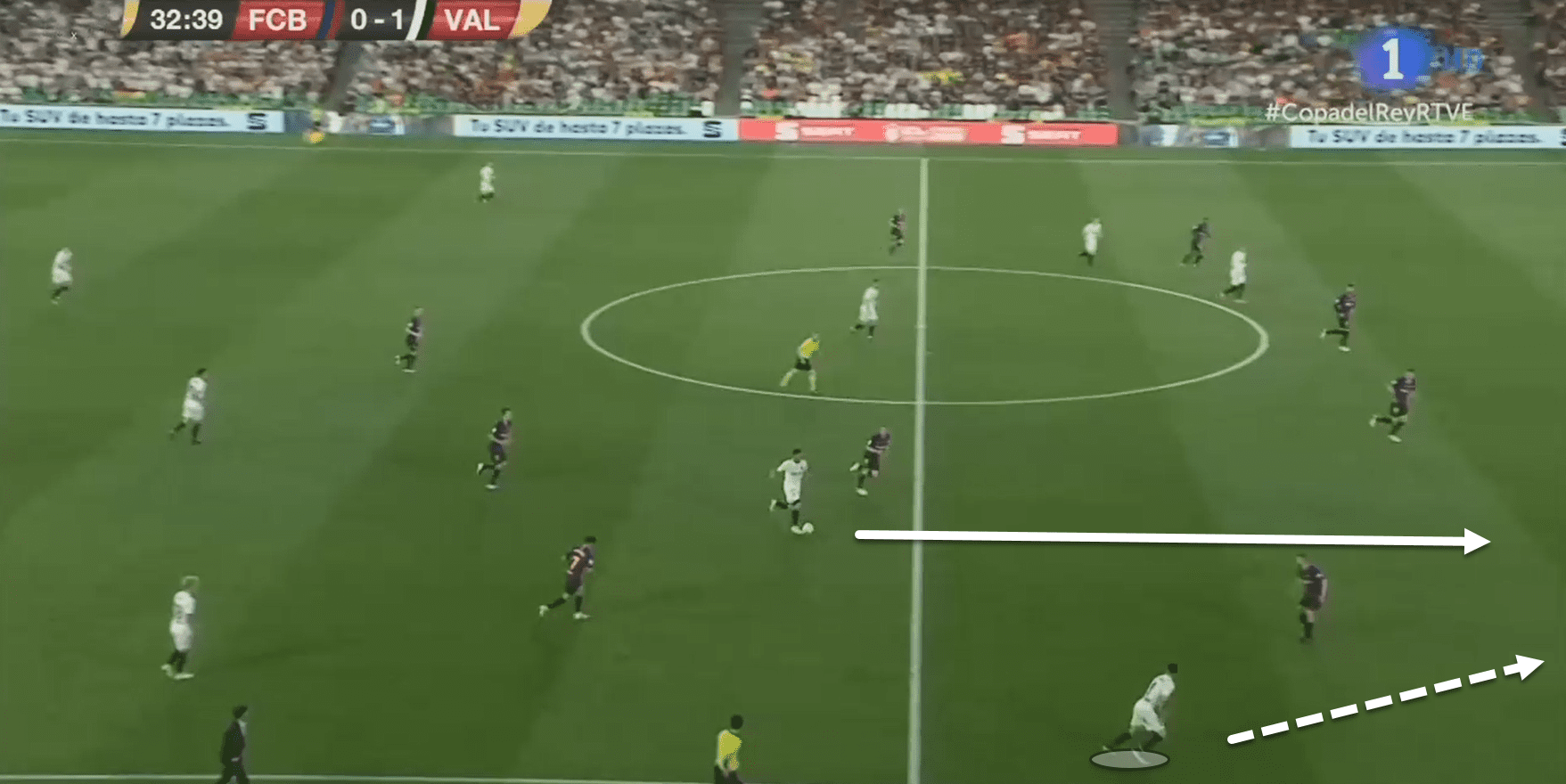
Even when not in transition phases, Barcelona’s full-backs will have to be careful with their positioning and watch out for balls being played in behind them.
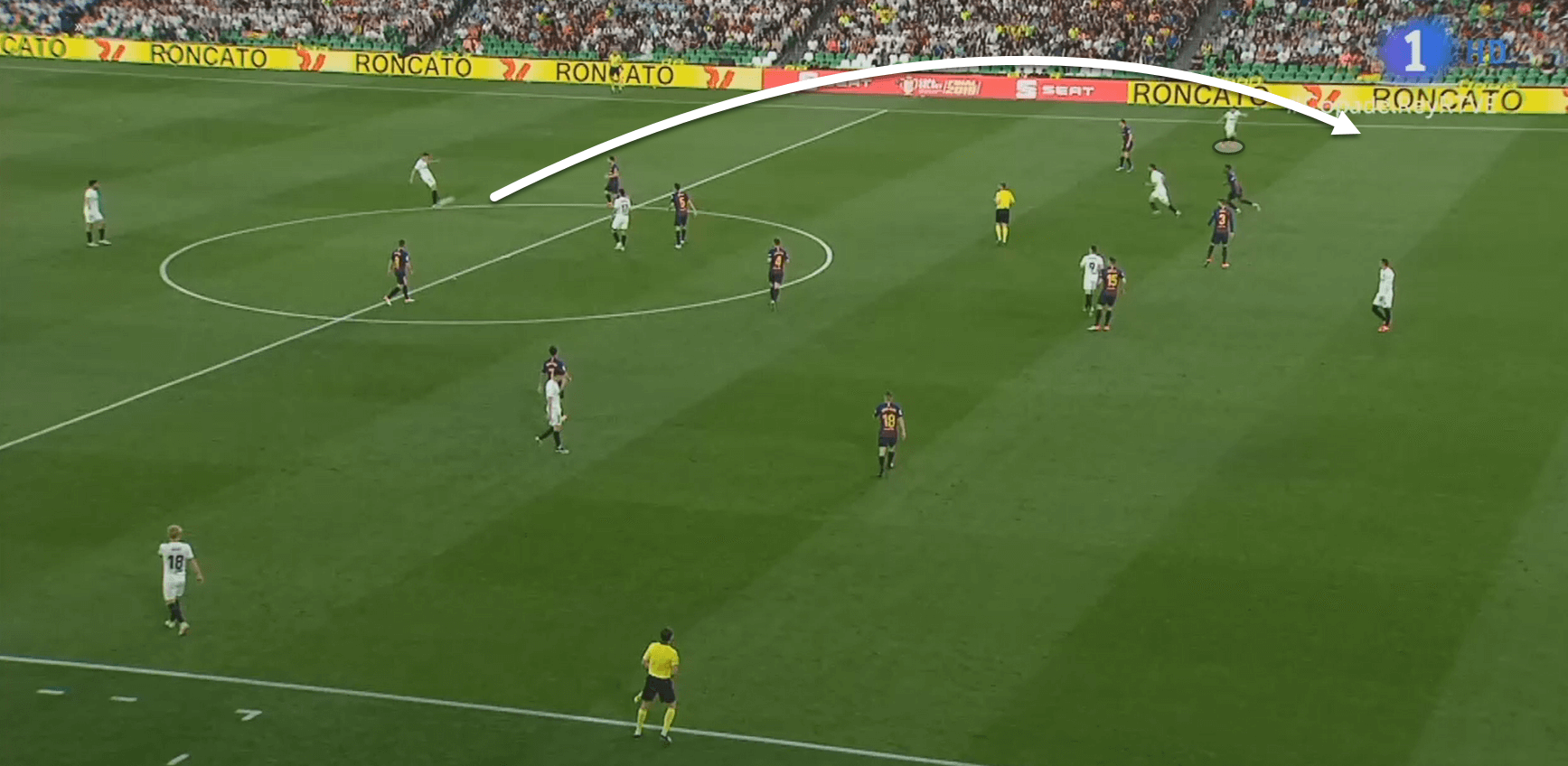
How can Valencia hurt Barcelona?
As already mentioned, there is no way of knowing whether new coach Albert Celades will stick with the 4-4-2 that has served Valencia so well in games against Barcelona in the past and an analysis of Valencia’s approach under their previous manager can only tell us so much. He may well want to implement his own ideas from day one and revert to a more orthodox 4-3-3 or 4-2-3-1 variation.
It is essentially a question of whether he will sacrifice one of the strikers (Marcelino usually selected any combination out of Kevin Gameiro, Maxi Gómez and Rodrigo in attack) for an extra midfielder. If he does this then Rodrigo is one player who could see himself moved out wide. And in the absences of true number ten players, captain Dani Parejo could be moved into a more advanced role in front of a robust central midfield pivot of Geoffrey Kondogbia and Francis Coquelin.
Regardless of which of these options Celades goes for, we can expect the usual suspects of José Gayà and Daniel Wass to appear in the full-back roles. Considering Barcelona like to use the whole width of the pitch in order to break down the opposition, Valencia’s full-backs will have to be on top of their game.
One thing they will have to be wary of is when Barcelona switch the play from one side to the other in an effort to exploit spaces out wide. It may be a good idea for Valencia’s full-backs to take the aggressive approach adopted by Athletic’s full-backs that we looked at earlier. As we can see in the image below from Valencia’s last game against Mallorca, this is something they are well drilled in.
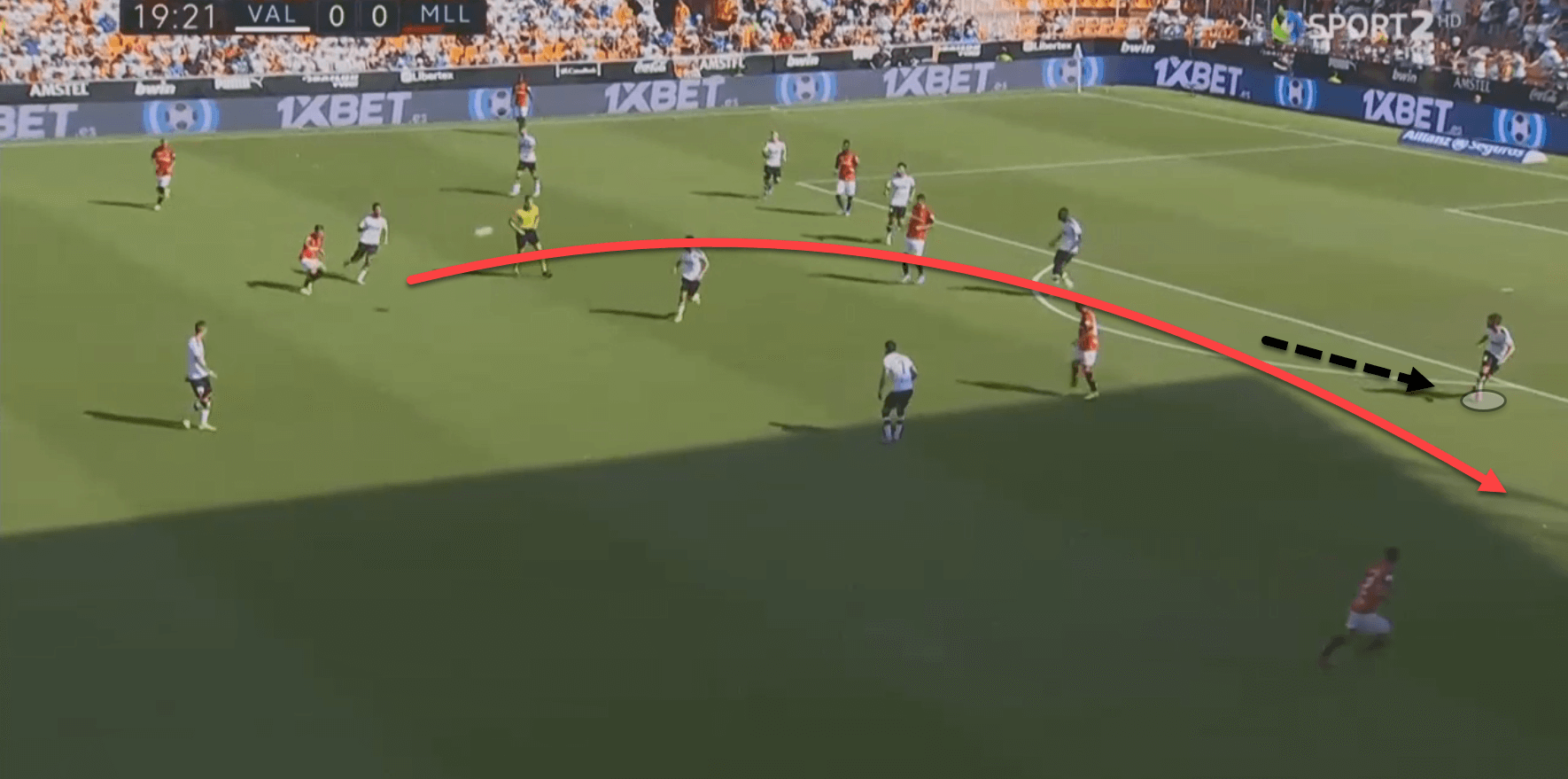
This strategy of having the full-back abandon the backline in order to quickly snuff out the threat is a risky one. This is because it relies on the full-back winning the ball first time. If he doesn’t win the ball then there is a big risk of the opposition exploiting the hole left in the defensive line, or the winger delivering a dangerous cross.
Provided the full-back does win the one-on-one though, the rewards can be great also. For Valencia, these could be valuable opportunities to launch counter-attacks, which is in fact what happened against Mallorca.
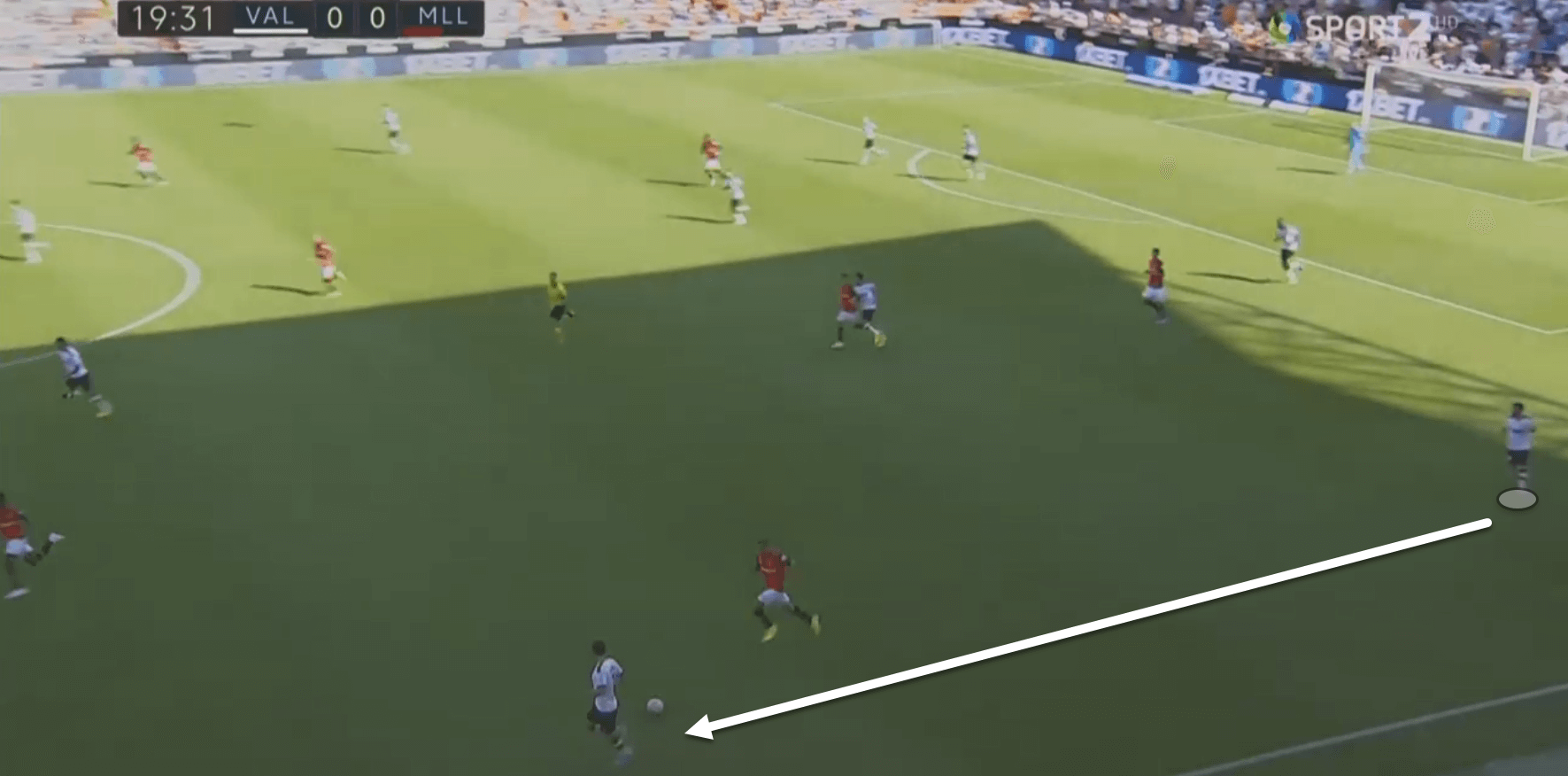
After winning the ball, Gayà was able to play a simple forward pass to release Guedes, immediately breaking Mallorca’s lines and setting up a counter-attack. The Portuguese winger is one of Valencia’s quickest players when running with the ball and they will look to him to surge the team forward when the opportunity presents itself.
Conclusion
This is sure to be an interesting tactical contest as we see Albert Celades make his La Liga coaching debut. Will the former assistant to Julen Lopetegui at Real Madrid look to implement the possession-based style of his former boss or will he stick with predecessor Marcelino’s disciplined counter-attacking tactics that served Valencia so well last term?
Where Barcelona are concerned, it will be an opportunity to see how Ernesto Valverde continues to integrate newcomers Frenkie de Jong and Antoine Griezmann into his new-look side. After a mixed start and with Messi and Dembélé still unavailable the pressure will be on Barcelona to find their rhythm and get back to winning ways against a Valencia side which have had a far more testing week in terms of match preparation.

If you love tactical analysis, then you’ll love the digital magazines from totalfootballanalysis.com – a guaranteed 100+ pages of pure tactical analysis covering topics from the Premier League, Serie A, La Liga, Bundesliga and many, many more. Buy your copy of the August issue for just ₤4.99 here.





Comments